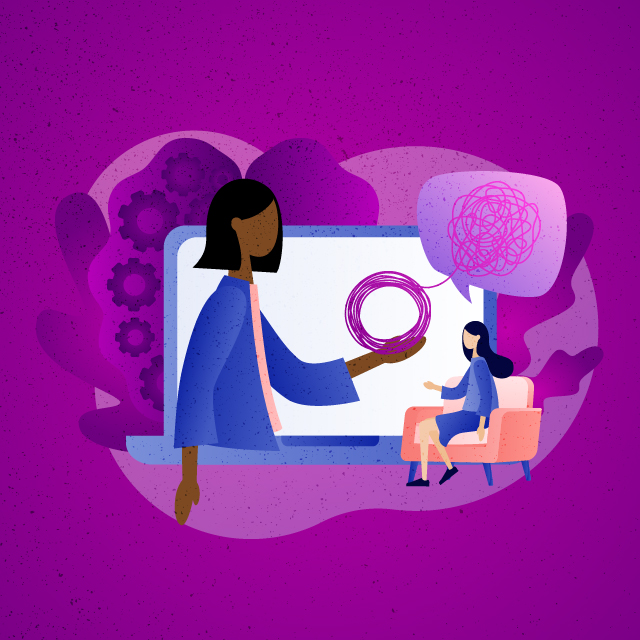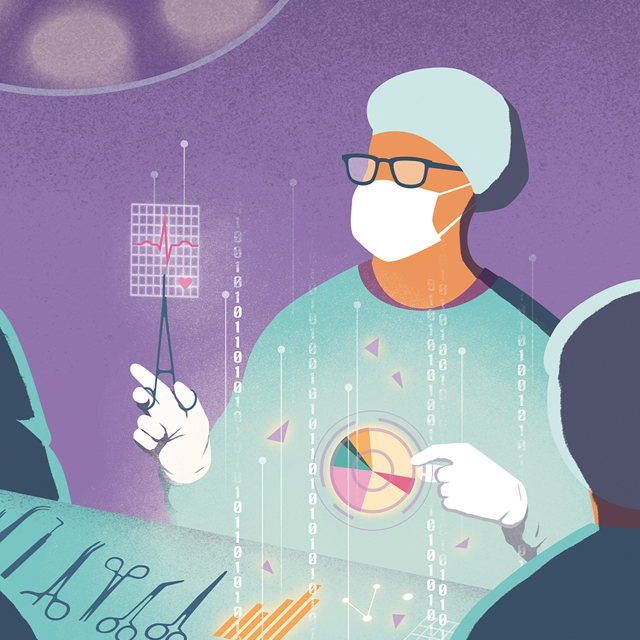With eyes fixed on the computer screen, a patient uses her bicep muscles to pump her arms and increase the speed of a mine cart headed for a hill. She continues pumping while bending her body from the waist to grab some coins on the left, then on the right. When she reaches the finish line, she catches her breath before the next level begins.
“The pandemic has really been an accelerator and pushed telemedicine forward for us,” says Harrison Segall, a physical therapist in the Johns Hopkins Rehabilitation Network. “We saw the changing times as an opportunity — not just to improve our telemedicine platform, but to create a more enhanced experience.”

Coronavirus (COVID-19) Email Alerts
Sign up to receive coronavirus (COVID-19) email updates from Johns Hopkins Medicine.
Physical medicine and rehabilitation therapists have incorporated neurogaming technology into rehabilitation at The Johns Hopkins Hospital to engage patients in the typically mundane exercises that build strength after an illness or injury. The first group of patients to try it out were recovering from COVID-19.
The system includes a desktop computer with a camera, special software, a wireless keyboard and a sensor arm that captures movement. Games — 26 in all — use body movement in place of a controller or joystick to direct the action on the screen. In addition to driving a mine cart, players can build towers, climb rock walls, fly planes and race cars.
“It provides a fun way for patients to be active in an otherwise confined space, whether we are with them or not,” says Ken Johnson, a physical therapist and director of the Johns Hopkins Rehabilitation Network Outreach. “With COVID patients, it saves personal protective equipment for the staff because clinicians may still interact with the patient during game play, but don’t need to go into patient rooms.”
To customize games, therapists record the patient’s range of motion in the upper body, lower body and hands; adjust the game to compensate for any assistive device like a wheelchair or walker; and choose the appropriate level of difficulty for the patient’s abilities.
Patients learn how to use the system during an in-person rehabilitation session and then continue with telemedicine using the tablets in their hospital rooms. During these virtual visits, therapists provide guidance to help with any difficulties. When the patient improves, the therapist recalibrates the game accordingly.
Segall finds that people often use the wrong muscles when they do rehabilitation exercises alone. The game addresses this problem by analyzing the movements captured by the sensor arm and computer camera, and providing feedback to the patient on whether the movements are correct. As people progress through the levels of the game, the number of distractions increases to challenge the brain’s executive functioning — decision making and performing multiple tasks.
In addition to people who had COVID-19, the system is being used with patients recovering from neurologic conditions like traumatic brain injury, concussion and stroke. Purchased with a $150,000 donation to Johns Hopkins, systems are also available to go home with patients for outpatient rehabilitation. These units are the same as those in the hospital, but include a smaller personal computer that connects to a television. According to stroke recovery experts, this is the first time the technology — developed in Switzerland — is being used in the United States.
Segall says finding exercises that are fun and encouraging is important to recovery. “This is a way we can give that to patients,” he says, “especially when in-person contact is limited.”



